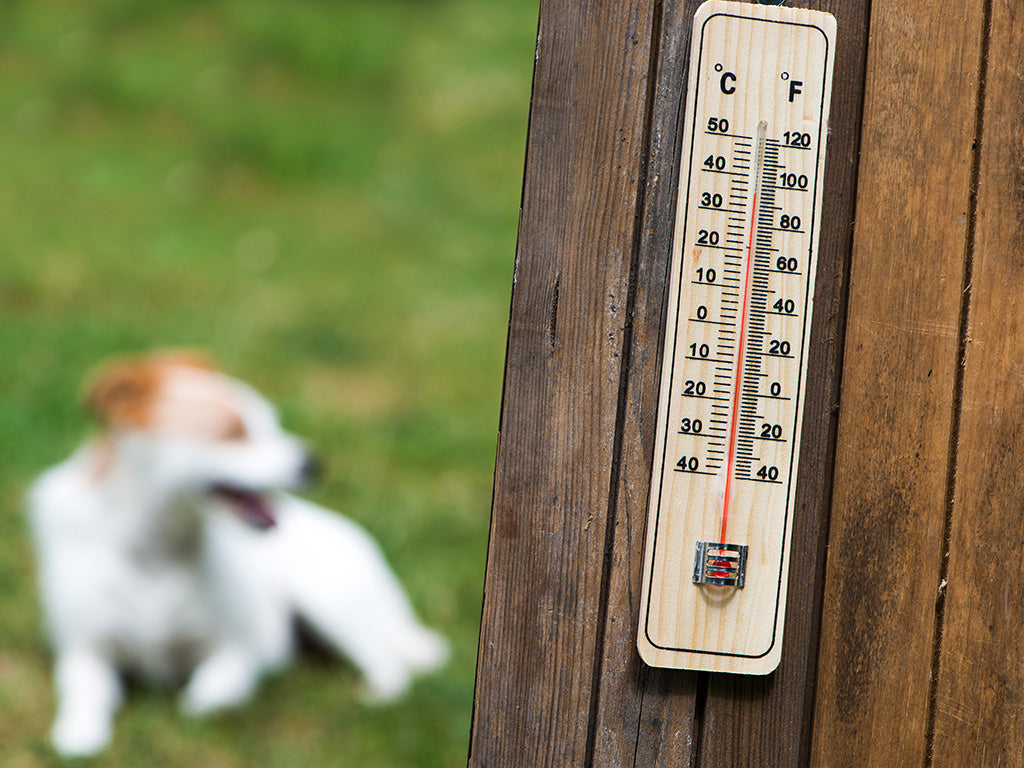The sun is out and the days are getting longer. We love spending time outdoors, and so do our canine companions. But as the temperature rises, it's vital to remember that our furry friends can struggle in the heat. Unlike us, they can't sweat through their skin to cool down. Their main way of regulating body temperature is through panting, which can be less effective in hot or humid conditions.
This makes dogs incredibly vulnerable to heatstroke. It can happen quickly and be life-threatening. The good news is that with a few simple steps, you can keep your dog safe and comfortable all summer long.
Spotting the Signs of Heatstroke
Knowing what to look for is the first and most important step. If you notice any of these symptoms, act immediately. Heatstroke can escalate very quickly.
- Excessive Panting: Much heavier and faster than normal.
- Difficulty Breathing: Short, laboured breaths or gasping.
- Drooling: Thick, ropey saliva.
- Lethargy and Weakness: Your dog seems tired, drowsy or uncoordinated.
- Vomiting or Diarrhoea: These can be clear indicators of distress.
- Collapse: In severe cases, your dog may become unconscious.
If you suspect heatstroke, move your dog to a cool area immediately. Offer small amounts of water. Use a damp cloth to gently cool their head, neck and paws.
Do not use very cold water or an ice bath, as this can cause the body to go into shock. Call your vet straight away for emergency advice.
Smart Walks for a Happy Dog
Walks are a core part of your dog’s routine, but they need to be adapted for hot weather. A hot day doesn't mean no walk at all. It means a walk at the right time.
- Timing is Everything: Walk your dog in the early morning or late in the evening. Avoid the hottest part of the day, typically from 11 am to 3 pm.
- The Five-Second Tarmac Test: Pavements and roads absorb a lot of heat. They can get hot enough to burn your dog’s paw pads. Place the back of your hand on the tarmac for five seconds. If it's too hot for you, it's far too hot for your dog’s paws. Stick to grass or shady paths.
- Limit Strenuous Exercise: On hot days, a gentle stroll is enough. Avoid running, cycling, or intense ball games that could cause them to overheat.
Creating Cool Spaces and Staying Hydrated
Keeping your dog cool is about more than just walks. You can make their home environment a sanctuary from the heat.
- Water, Water, Water: Always ensure your dog has access to fresh, cool water. Place multiple bowls around the house and garden. When you're out and about, carry a travel water bottle and a portable bowl. Adding a few ice cubes to their water bowl at home can be a nice treat.
- Shade and Shelter: If your dog is outside, provide a shaded area for them to rest. This could be under a tree, a parasol or a canopy. Indoors, keep curtains or blinds closed to block out direct sunlight and find a cool spot for them to lie down.
- Cooling Products: Consider using a cooling mat. These are filled with a special gel that activates when pressure is applied, offering a refreshing place to lie down. A damp towel (not draped over them, as this can trap heat) or a shallow paddling pool can also be a fun way to help them cool off.
Fun Ways to Beat the Heat
Keeping your dog cool can be enjoyable for both of you. Why not try some refreshing frozen treats?
- Frozen Kongs: Fill a Kong with your dog's favourite treats, like a mixture of peanut butter (xylitol-free), yoghurt and some dog-safe fruit. Freeze it for a few hours. This will keep them mentally stimulated while they enjoy a tasty, cool snack.
- Ice Lollies: Freeze dog-safe stock or puréed fruit in an ice cube tray for a simple, hydrating treat.
Breeds That Need Extra Care
While all dogs can get heatstroke, some breeds are more susceptible. Be extra vigilant with them.
- Brachycephalic Breeds: Flat-faced dogs like Pugs, French Bulldogs, Bulldogs, and Shih Tzus have shortened airways, making it hard for them to pant effectively.
- Thick-Coated Breeds: Dogs with dense or double coats, such as Huskies, Golden Retrievers, and Border Collies, are bred for colder climates and can easily overheat.
- Elderly or Overweight Dogs: Senior dogs and those carrying extra weight often struggle to regulate their body temperature.
The responsibility of a pet owner is to be vigilant. Be sensible, be prepared, and you and your dog can enjoy the beautiful summer weather safely.
